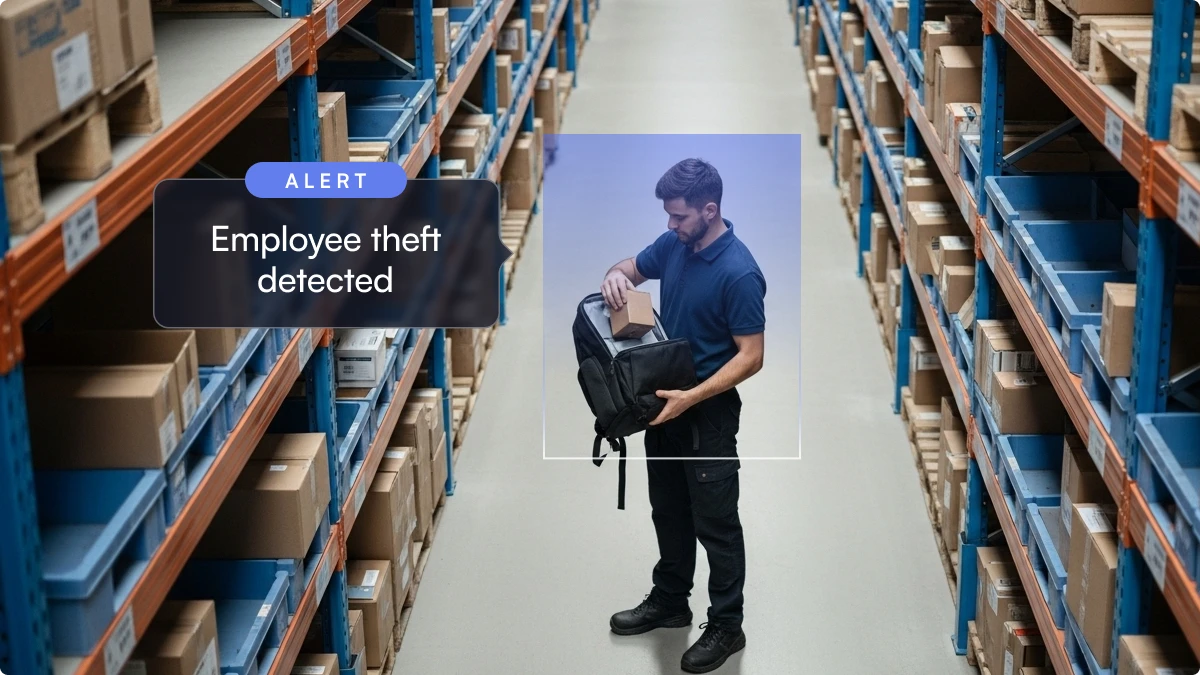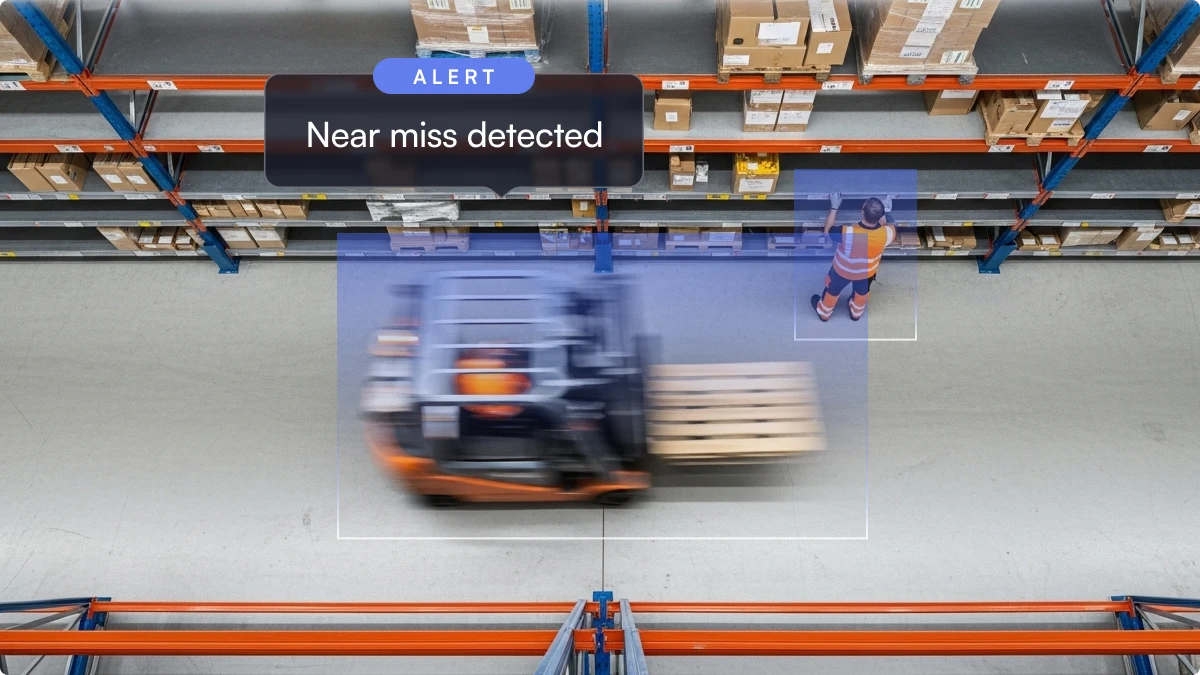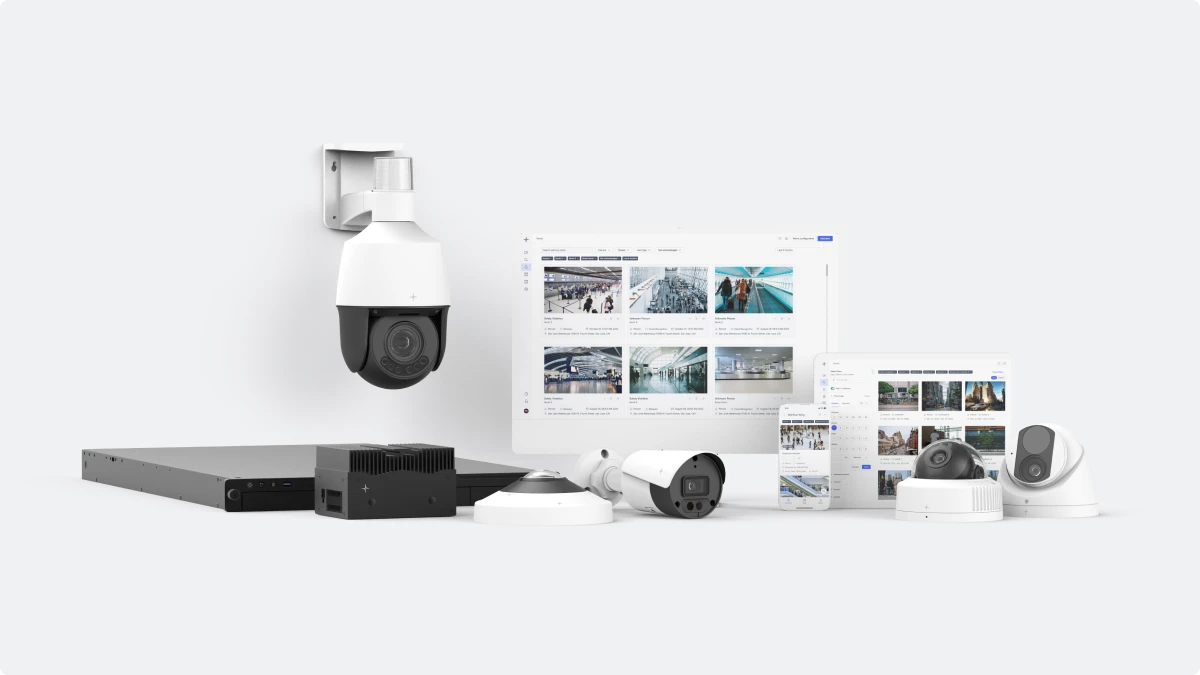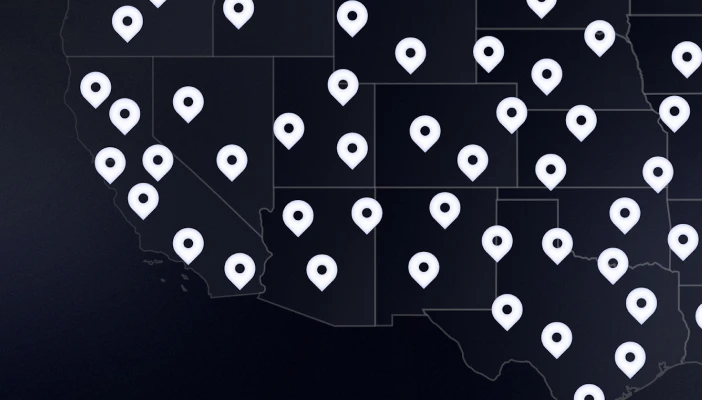A secure warehouse underpins a resilient supply chain. As automation scales and inventory values rise, protecting assets, data, and people takes more than cameras that record and alarms that ring. Best-in-class warehouse operations combine physical safeguards with intelligent video systems and proactive response capabilities.
This guide outlines six practical steps to put AI video security to work. You will learn the key measures, proven strategies, and best practices to design, pilot, and roll out AI video security across single-site and multi-site operations, improving protection and productivity.
Table of Contents
- Step 1: Understand What AI Video Security Is and Why It Matters
- Step 2: Identify Your Top Security and Operational Risks
- Step 3: Conduct a Warehouse Security Assessment
- Step 4: Define Policies, Procedures, and Training
- Step 5: Partner With the Right AI Video Security Platform
- Step 6: Integrate Smart Systems and Automation
Step 1: Understand What AI Video Security Is and Why It Matters
AI video security marks a new era in warehouse protection. Traditional systems react to motion or require manual review of footage. AI takes this further by continuously analyzing video to identify people, vehicles, and behaviors that signal risk.
Instead of recording what happened, AI helps teams see what is happening in real-time. Edge-based models process footage directly on site for instant detection, while hybrid-cloud architecture ensures scalability and secure access across all locations. The result is faster response, fewer blind spots, and measurable improvements in both safety and efficiency.
Before you begin implementation, identify your key objectives. Reducing shrink, improving worker safety, and gaining operational insight are common goals that guide system design and configuration.

Step 2: Identify Your Top Security and Operational Risks
Start by locating your vulnerabilities. Warehouses can have hundreds of cameras, yet incidents often slip by due to excessive footage and insufficient insight. Threats come from both external and internal sources. According to the Chartered Institute of Logistics and Transport, theft in warehouses and production facilities can account for up to 50% of stock losses in some regions.
Focus first on critical zones such as secured storage, loading docks, receiving areas, and key access points. Include insider risks such as pilferage on pick lines, staged returns in RTV, collusion at docks, and repeated access to secure cages. Factor in operational issues like unsafe forklift behavior, PPE violations, and blocked exits.
Step 3: Conduct a Warehouse Security Assessment
Your assessment should translate risk into a deployment blueprint. Start with a floor plan. Map the receiving, shipping, and storage zones, capturing camera positions and angles, lighting quality, and retention settings. For each area, document device health, network constraints, and coverage gaps, then log incident history so detections align with real patterns.
What to produce:
- A coverage map with proposed camera adds or re-aims
- An integration list for access control, alarms, and inventory systems
- A pilot plan that names sites, zones, owners, and success criteria
This becomes your build sheet for configuration, testing, and go live.
Remember, every facility has its own unique challenges. That’s why your security assessment should be customized to address your specific needs, risks, and vulnerabilities. Partnering with a security professional brings expert insight to ensure your assessment is thorough, accurate, and actionable, giving you peace of mind and stronger protection.
Step 4: Define Policies, Procedures, and Training
AI only creates value when alerts lead to consistent action. Define clear, role-based workflows that outline who is responsible for what tasks, by when.
Start with the high-signal events you will deploy in the pilot. Define the routing list and the steps from alert to resolution. Make it easy for staff to acknowledge, verify, add notes, and close.
Minimum playbooks to publish:
- Theft or intrusion at docks or cages: Alert owners, verification steps, deterrence actions, and when to call law enforcement.
- Unauthorized access or tailgating: Badge check, video verification, and corrective coaching steps.
- Safety violation: Who intervenes on site, how evidence is logged, and how retraining is scheduled?
- System health: Who fixes offline cameras, failed storage, or outdated firmware, and in what time frame?

Step 5: Partner With the Right AI Video Security Platform
Selecting the right AI video security partner is a crucial step. The platform should align with how your warehouses operate, address your unique risks, and seamlessly integrate into your current workflows and systems. Ensure it checks the boxes for accuracy, scale, privacy, and day-to-day usability, so teams see value quickly.
Here are key questions to ask:
- Camera compatibility: Can you enable AI on existing IP cameras without rip and replace?
- Edge plus cloud: Does the platform support edge processing for instant alerts with secure, hybrid-cloud management for scale?
- Behavior-based analytics: Can it detect trespassing, tailgating, unsafe behavior, and loitering with low false alarms?
- Human verification: Is there an option to add human review for high-priority alerts?
- Natural language and attribute search: Can teams find “person in red vest near Dock 3 last night” in seconds?
- Access and alarm integrations: Will door events, door held open, and alarm states be linked to video with attached clips?
- Automation and deterrence: Can verified events trigger lights, audio, or notifications, and are these actions logged?
- Dashboards and KPIs: Can dashboards be customized to align with your workflows and goals, displaying the metrics you care about, such as dock throughput and dwell time, safety incident rates, and site-specific KPIs?
- Security and privacy: Is data encrypted in transit and at rest, with role-based access, audit logs, and support for SOC 2, HIPAA, NDAA, and GDPR?
- Scalability and admin controls: Can you standardize profiles, push configurations, and manage multi-site deployments from one console?
Step 6: Integrate Smart Systems and Automation
Integrations are where AI compounds value. Link detections with door events, alarms, and inventory movements so the system can confirm and act.
High-value integrations:
- Access control: Pair badge events with video. Flag door held open and tailgating. Auto-attach clips to the door event log.
- Alarm monitoring: Send only AI-verified events to the monitoring system. Require clip review before dispatch. Store operator notes with the case.
- Inventory systems: Join RFID or barcode exceptions to video at receiving and returns. Create a one-click trail from scan to clip.
- Deterrence controls: Trigger lights or audio announcements for verified trespassing at closed bays. Notify supervisors in the same workflow.
Conclusion: Building a Safer, Smarter Warehouse
Implementing AI video security is more than a technology upgrade. It is a shift toward proactive, data-driven warehouse management. By following these six steps, organizations can enhance protection, minimize losses, and improve efficiency across all sites.
The goal is not just to catch incidents faster, but to prevent them altogether while unlocking insights that improve productivity and safety. With the right strategy and platform, AI video security becomes a core part of how modern warehouses operate: resilient, efficient, and ready for what comes next.

Discover the Power of Lumana's AI Video Security Platform
Lumana brings advanced AI video intelligence to warehouse operations, transforming existing IP cameras into proactive security and operational tools. The platform detects behavior, verifies events, and automates response, all in real time.
Built on a hybrid-cloud architecture, Lumana combines edge processing for speed with centralized visibility for scale. Teams gain actionable insights into safety, theft, and workflow efficiency, improving both protection and performance across every facility.
Request a demo today and take the first step toward safer, more secure warehouse operations.
Discover the power of AI video security
Related Articles
Security infrastructure
Dec 18, 2025
The Benefits of Unifying AI Video Security and Access Control
Company
Dec 15, 2025
Lumana Surpasses 50,000 Cameras, Cementing Its Leadership in AI Video Surveillance
Product
Dec 5, 2025








